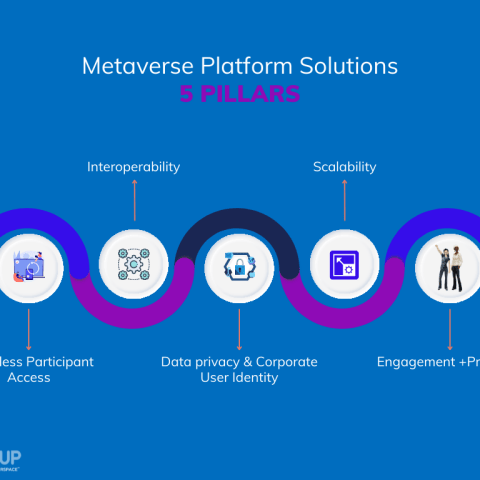Did you know that companies with diverse teams are 35% more likely to have financial returns above their industry average? Inclusive workplaces that embrace diversity not only benefit from a broader range of perspectives and ideas but also create a positive and engaging work environment for employees. This is where diversity training programs play a crucial role.
Diversity training programs are professional training programs designed to develop skills needed to work with people from diverse cultural backgrounds. They aim to promote awareness, appreciation, and effective communication across diversity in order to foster an inclusive work environment. By implementing diversity training programs, organizations can prevent civil rights violations, increase inclusion, and promote teamwork.
Key Takeaways:
- Diverse teams are 35% more likely to have financial returns above their industry average.
- Diversity training programs aim to promote awareness, appreciation, and effective communication across diversity.
- Implementing diversity training programs can prevent civil rights violations, increase inclusion, and promote teamwork.
The Importance of Diversity Training
Diversity training programs play a crucial role in today’s workplaces, providing numerous benefits to organizations and employees alike. These programs are designed to foster a culture of inclusion, understanding, and acceptance, allowing diverse teams to thrive and contribute their best. By prioritizing diversity training, organizations can attract top talent, maximize profits, and ensure compliance with moral and legal standards.
Attracting talent: Workplace diversity programs, including comprehensive diversity training, can be a powerful tool in attracting and retaining top talent. In today’s globalized and interconnected world, individuals from different backgrounds seek inclusive workplaces where they can feel welcomed and valued for their unique perspectives and experiences. By highlighting a strong commitment to diversity through effective training programs, organizations can position themselves as desirable employers for individuals from diverse backgrounds.
“Diversity training programs are essential for fostering inclusive work environments. They help organizations attract and retain diverse talent, which promotes creativity, innovation, and adaptability.” (source)
Maximizing organizational profits: Workplace diversity brings numerous benefits to organizations, including enhanced creativity, innovation, and problem-solving abilities. Diverse teams can offer unique perspectives and insights that lead to better decision-making and increased productivity. By implementing diversity training for employees, organizations can tap into the full potential and diverse skill sets of their workforce, driving sustainable growth and competitive advantage.
Adhering to moral and legal standards: Workplace diversity is not just a moral imperative but also a legal requirement in many jurisdictions. Diversity training programs help establish a culture of respect and equality, educating employees about the importance of embracing differences and avoiding discriminatory behaviors. By complying with legal standards and promoting a culture of inclusion, organizations can minimize the risk of potential civil rights violations and create a safe and harmonious work environment for all.
Developing leadership and essential skills: Diversity training programs go beyond raising awareness and promoting acceptance. They also focus on developing essential skills, such as effective communication, conflict resolution, and cultural competency, among others. These skills are vital for leaders and employees to navigate diverse work settings, build strong relationships, and collaborate effectively. By investing in diversity training, organizations can empower their workforce with the skills necessary to excel in today’s diverse and interconnected business landscape.
Disseminating information about diversity-related issues and organizational policies: Diversity training programs serve as a platform to educate employees about diversity-related issues, such as unconscious bias, cultural awareness, and equity. They also provide an opportunity to communicate organizational policies and initiatives aimed at fostering inclusion and equality. By disseminating this information effectively, organizations can align their employees’ behavior and attitudes with their diversity objectives.
Improving leadership development and management effectiveness: Effective leadership and management are essential for creating an inclusive workplace culture. Diversity training programs can equip leaders and managers with the knowledge and skills necessary to support diverse teams, address potential conflicts, and foster an environment of respect and inclusion. By investing in the development of leaders, organizations can strengthen their ability to manage diverse workforces successfully.
| Benefits of Diversity Training |
|---|
| Attracts top talent |
| Maximizes organizational profits |
| Ensures compliance with moral and legal standards |
| Develops leadership and essential skills |
| Disseminates information about diversity-related issues and policies |
| Improves leadership development and management effectiveness |
Essential Elements of Successful Diversity Training

Successful diversity training programs are designed with specific objectives in mind. They encompass key acts such as active understanding, change in perspectives, reflection, and realization. These elements contribute to creating a comprehensive and effective training experience.
One crucial aspect of successful diversity training is a well-designed training process. This includes selecting experienced trainers who have a deep understanding of diversity and inclusion issues. Trainers play a vital role in facilitating discussions, guiding participants through exercises, and encouraging dialogue that promotes growth and learning.
Encouraging Learners to Step Out of Their Comfort Zone
To foster meaningful change, diversity training should encourage learners to step out of their comfort zone. This means creating a safe environment where individuals feel free to express their thoughts, ask questions, and challenge their existing beliefs.
The journey toward diversity and inclusion requires participants to confront their biases, assumptions, and preconceived notions. By providing a supportive space for exploration, organizations can facilitate personal growth and promote understanding among employees.
Emphasizing the Journey and Growth
Successful diversity training goes beyond a one-time event. It emphasizes the ongoing journey toward building a more inclusive and diverse workplace. By focusing on growth and continuous learning, organizations can ensure that diversity training becomes an integral part of their culture.
“Diversity training is not a checkbox; it’s a commitment to growth, understanding, and continuous improvement.”
Organizations should incorporate diversity training as an ongoing initiative that is woven into employee development programs, leadership training, and performance evaluations. By integrating diversity and inclusion into all aspects of the organization, a culture of understanding and acceptance can thrive.
Getting Started with Diversity Training
To effectively implement diversity training within your organization, it is essential to start by reflecting on the need for a more inclusive work environment and identifying the specific diversity issues your organization faces. By acknowledging these challenges, you can pave the way for meaningful change and create a more welcoming and diverse workplace.
When starting diversity training, it is important to consider the specific groups that should be involved in the program. This can include employees at all levels, from entry-level to executive positions, as well as teams and departments that could benefit from increased diversity awareness and understanding.
Having discussions about the benefits of diversity training is crucial for securing buy-in and support from all stakeholders within the organization. Highlighting the positive impact diversity training can have on employee engagement, productivity, and teamwork can help garner support and ensure the program’s success.
Creating a list of topics to be covered in the diversity training program can serve as a roadmap for planning and organizing the training sessions. These topics can include unconscious bias, cultural sensitivity, inclusive communication, and fostering an inclusive work culture.
“Diversity is the mix. Inclusion is making the mix work.” – Andrés Tapia
What is DE&I Training?

DE&I training programs play a crucial role in creating diverse, equitable, and inclusive workplaces. These programs are designed to uncover, identify, and address biases or prejudices that may hinder the hiring or promotion of individuals from underrepresented groups.
DE&I training provides organizations with the tools and knowledge to work towards creating an environment where individuals of all backgrounds feel valued and respected. By focusing on diversity, equity, and inclusion, these programs aim to foster a culture of belonging and equal opportunities.
“DE&I training is not just about meeting compliance requirements; it is about unlocking the potential of every team member and harnessing the collective power of diversity. It is about creating a space where everyone can bring their authentic selves to work and thrive.”
Through DE&I training, organizations can address unconscious biases, promote cultural awareness, and encourage collaboration among diverse teams. By challenging assumptions and promoting empathy, DE&I training helps individuals develop a deeper understanding of different perspectives, experiences, and identities.
Benefits of DE&I Training
DE&I training programs can lead to a wide range of benefits for organizations. These include:
- Improved employee morale and engagement
- Enhanced creativity and innovation
- Increased productivity and teamwork
- Improved customer satisfaction and loyalty
- Reduced turnover and increased retention
By investing in DE&I training, organizations can create a more inclusive work environment where individuals are empowered to contribute their unique perspectives and talents.
DE&I training equips organizations with the knowledge and skills necessary to create a workplace that celebrates diversity, embraces equity, and fosters inclusion. It is a critical step towards building a culture of respect, acceptance, and equality.
| Key Features of DE&I Training Programs | Benefits |
|---|---|
| Uncovering biases and prejudices | Provides awareness and promotes inclusion |
| Promoting cultural awareness | Facilitates understanding and respect |
| Fostering collaboration among diverse teams | Enhances teamwork and innovation |
| Addressing unconscious biases | Leads to fairer decision-making processes |
Creating a DE&I Training Program
Implementing a successful DE&I (Diversity, Equity, and Inclusion) training program requires careful planning and customization to meet the unique needs of your organization. By following key guidelines and considering various aspects, you can create an effective training program that fosters a culture of diversity and inclusion within your workplace.
Developing a Clear Understanding
Before diving into creating a DE&I training program, it is crucial to develop a clear understanding of what DE&I means for your organization. Conduct an assessment to identify specific areas that need improvement and define your goals for the training program. By identifying the challenges and opportunities unique to your organization, you can tailor the training program to address these specific issues.
Extending and Maintaining Training Over Time
DE&I training is not a one-time event but rather an ongoing process. It is important to extend the training over an extended period to ensure lasting impact and behavior change. Consider implementing follow-up sessions, workshops, and ongoing education to reinforce the training and provide continual learning opportunities.
Tailoring to Your Organization
To make the DE&I training program more relevant and relatable to your employees, it is crucial to tailor it to your organization’s unique context. Take into account your company’s culture, values, and specific challenges when designing the program. Incorporate real-life examples and case studies that resonate with your employees and encourage them to apply what they learn in their day-to-day work.
Planning an Integrated Approach
To ensure the effectiveness of your DE&I training program, it is essential to plan an integrated approach that utilizes various instruction methods. Consider incorporating workshops, group discussions, role-playing exercises, and multimedia resources to engage participants and provide a holistic learning experience. This will help cater to different learning styles and ensure maximum participation and understanding.
Creating a DE&I training program that is tailored to your organization’s needs requires careful consideration of multiple factors. By developing a clear understanding of DE&I, extending and maintaining the training over time, tailoring it to your organization, and planning an integrated approach, you can create a program that promotes diversity, equity, and inclusion in your workplace.
The Benefits of DE&I Training
Implementing Diversity, Equity, and Inclusion (DE&I) training programs in organizations can have numerous positive outcomes and contribute to a more inclusive and productive workplace. DE&I training goes beyond promoting diversity; it aims to create a culture that values and supports individuals from all backgrounds. Let’s explore the benefits of DE&I training:
- Improved Employee Morale: DE&I training fosters a sense of belonging and inclusivity among employees. When employees feel valued and respected for their unique backgrounds, it enhances their morale, leading to increased job satisfaction and productivity.
- Enhanced Customer Satisfaction: By embracing diversity and understanding different perspectives, organizations can better serve their diverse customer base. DE&I training equips employees with the skills to engage with and cater to customers from various backgrounds, ultimately improving customer satisfaction and loyalty.
- Strengthened Teamwork and Collaboration: DE&I training promotes effective communication and collaboration among team members from diverse backgrounds. It encourages individuals to appreciate different viewpoints, leading to stronger teamwork, innovation, and problem-solving abilities.
- Development of Interpersonal Skills: DE&I training helps employees develop critical interpersonal skills, such as active listening, empathy, and conflict resolution. These skills enhance their ability to work effectively with colleagues, clients, and stakeholders from diverse backgrounds.
DE&I training programs can contribute to more productive and inclusive workplaces, leading to improved employee morale, customer satisfaction, teamwork, collaboration, and interpersonal skills. They align with the organization’s mission and values, support recruitment and retention efforts, and foster a positive work environment.
Furthermore, DE&I training promotes the development of diverse leadership teams that bring different perspectives, strategies, and problem-solving approaches. This diversity of thought can drive innovation, decision-making, and organizational success.
It’s important to note that the benefits of DE&I training are not limited to the internal dynamics of an organization. By actively prioritizing diversity and inclusion, organizations enhance their reputation, attract top talent, and build strong relationships with clients, partners, and the wider community.
Overcoming Challenges in DE&I Training
While implementing DE&I training programs is crucial for fostering diversity, equity, and inclusion in the workplace, there are challenges that organizations must navigate to ensure the efficacy and success of these initiatives. By being aware of these challenges and taking proactive steps to mitigate them, organizations can create a more inclusive and supportive work environment.
Challenges in DE&I Training
- Diversity Fatigue: Some employees may perceive DE&I training as repetitive or unnecessary, leading to disinterest and disengagement.
- Resistance to Change: Individuals may resist adopting new beliefs or behaviors, especially if they feel threatened or uncomfortable.
- Unconscious Bias: Addressing and overcoming unconscious biases can be difficult, as they are deeply ingrained and may influence decision-making processes.
- Lack of Leadership Commitment: Without strong leadership support, DE&I training can lack the necessary resources and attention to drive meaningful change.
These challenges can hinder the effectiveness of DE&I training initiatives, but they can be overcome with careful planning and implementation.
Pitfalls to Avoid in DE&I Training
Avoiding certain pitfalls is essential to ensure that DE&I training programs achieve their intended goals and create a more inclusive work environment.
- Avoid Reinforcing Differences: The focus of DE&I training should be on bridging gaps and promoting unity, rather than emphasizing differences between individuals.
- Avoid Blaming or Shaming: It is important to create a safe and non-judgmental space for learning, where participants feel comfortable discussing sensitive topics without fear of being blamed or shamed.
- Avoid Tokenism: DE&I training should not be viewed as a checkbox exercise or an opportunity for organizations to appear diverse without addressing systemic issues.
- Avoid Ignoring Intersectionality: It is important to consider the intersecting identities and experiences of individuals when designing and delivering DE&I training, ensuring that it is inclusive and relevant to all participants.
By avoiding these pitfalls and focusing on empowering individuals and promoting inclusivity, organizations can create a more inclusive work environment and reap the benefits of a diverse workforce.
Tailoring DE&I Training to Your Organization

A successful DE&I training program should be customized to meet the specific needs, history, and culture of your organization. It is essential to assess your organization honestly and identify the areas where DE&I training can make the most impact. By tailoring the training, you can ensure that it resonates with your employees and addresses the unique challenges and opportunities within your workplace.
One way to tailor DE&I training is by utilizing professional help, such as consultants or trainers with expertise in diversity and inclusion. They can assist you in designing a program that aligns with your organization’s goals and values. These experts can provide valuable insights, tools, and resources to create an effective and engaging DE&I training experience.
Another important aspect of tailoring DE&I training is using real-life examples to illustrate concepts that employees can relate to. This helps employees see the relevance of the training to their own experiences and promotes a deeper understanding of the material. Real-life examples can also spark discussions and encourage employees to share their perspectives and insights.
Remember that DE&I training is an ongoing process. As your organization evolves and grows, your DE&I training program should evolve too. Regularly evaluate the effectiveness of the training and make necessary adjustments to meet the changing needs of your workforce.
By tailoring DE&I training to your organization, you can create a more inclusive and equitable workplace and foster a culture that values diversity. Investing in customized DE&I training demonstrates your commitment to creating a diverse and inclusive environment where every employee feels valued and respected.
“Tailoring your DE&I training program to the unique needs and culture of your organization is crucial for achieving meaningful results.”
For further insights on building inclusive workplaces and developing the capabilities of your employees, check out this article on McKinsey’s website.
Extending and Sustaining DE&I Training
Implementing a successful DE&I training program is just the beginning. To truly make a lasting impact, organizations must extend and sustain their commitment to diversity, equity, and inclusion. By ingraining these principles into the company culture, DE&I training becomes an ongoing initiative rather than a one-time event.
One key aspect of extending DE&I training is to reinforce the concepts and learnings over an extended period of time. This allows employees to internalize the knowledge and behaviors promoted during the training. Regular reminders, follow-up sessions, and continuous education ensure that diversity and inclusion remain top priorities for the organization.
Additionally, sustaining DE&I training requires ongoing evaluation and adaptation. As the needs and dynamics of the workforce evolve, it’s important to tailor the training program accordingly. Regular assessments and feedback from participants can help identify areas for improvement and drive continuous refinement of the content and delivery methods.
However, sustaining DE&I training goes beyond just the training itself. It requires a comprehensive approach that encompasses policies, procedures, and organizational practices. By aligning recruitment, performance management, and promotion processes with the principles of diversity and inclusion, organizations can create an environment that supports and reinforces the lessons learned in the training.
Moreover, fostering employee resource groups and creating platforms for open dialogues can further sustain DE&I efforts. These platforms provide opportunities for employees to share experiences, discuss challenges, and propose solutions, fostering a sense of belonging and collective responsibility.
Remember, DE&I training is not a one-size-fits-all solution. It should be tailored to the specific needs and culture of each organization. Investing in professional help or partnering with experienced DE&I consultants can provide valuable insights and guidance in creating a customized and sustainable DE&I training program.
Key Strategies for Extending and Sustaining DE&I Training
| Strategies | Description |
|---|---|
| Continuous Education | Reinforce DE&I concepts through regular reminders, follow-up sessions, and ongoing education initiatives. |
| Feedback and Assessment | Regularly evaluate the effectiveness of the DE&I training program and make necessary adaptations based on participant feedback and evolving needs. |
| Integration with Organizational Practices | Align recruitment, performance management, and promotion processes with diversity and inclusion principles to create a cohesive DE&I culture. |
| Employee Resource Groups | Foster employee resource groups and provide platforms for open dialogues to enhance diversity and inclusion efforts. |
| Partnerships and Professional Help | Seek professional guidance from DE&I consultants or organizations specializing in diversity training to develop a customized and sustainable program. |
By extending and sustaining DE&I training, organizations can create long-term impact and foster a culture that celebrates diversity and promotes inclusivity. Remember, diversity and inclusion are ongoing journeys that require continuous effort and commitment. By embracing these principles, organizations can create a better future for all.
Learn more about diversity training programs from Valamis.
Conclusion
Implementing diversity training programs and DE&I training initiatives can have a significant positive impact on organizations, promoting inclusivity, teamwork, and a more productive work environment. By addressing biases and fostering a culture of diversity and inclusion, organizations can attract talent, maximize profits, and create a welcoming and supportive workplace for all.
DE&I training helps develop the necessary skills to work effectively with individuals from diverse backgrounds, ensuring a deeper understanding and appreciation for differences. It equips employees with the tools to communicate and collaborate across diverse teams, breaking down barriers and promoting empathy.
Furthermore, DE&I training facilitates the identification and correction of biases that may hinder the recruitment and advancement of individuals from underrepresented groups. It encourages organizations to create equitable and inclusive policies and practices, leading to improved employee morale, customer satisfaction, and overall organizational success.
FAQ
What are diversity training programs?
Diversity training programs are professional training programs designed to develop skills needed to work with people from diverse cultural backgrounds. They aim to promote awareness, appreciation, and effective communication across diversity in order to foster an inclusive work environment.
What are the benefits of diversity training?
Diversity training benefits organizations by preventing civil rights violations, increasing inclusion, and promoting teamwork. It also attracts talent, maximizes organizational profits, adheres to moral and legal standards, develops leadership and essential skills, disseminates information about diversity-related issues and organizational policies, and improves leadership development and management effectiveness.
What are the essential elements of successful diversity training?
Successful diversity training programs include clear objectives, key acts such as active understanding, change in perspectives, reflection, and realization, a well-designed training process, and experienced trainers. The training design should consider methodology and delivery format, encourage learners to step out of their comfort zone in a safe environment, and emphasize the journey and growth.
How do you get started with diversity training?
To start diversity training, organizations need to reflect on the need for a more inclusive work climate and identify the diversity issues they face. It is important to consider the specific groups that should be involved in the training and discuss the benefits of diversity training within the organization. Creating a list of topics to be covered can help in planning the training program.
What is DE&I training?
DE&I training stands for diversity, equity, and inclusion training. It focuses on creating diverse, equitable, and inclusive workplaces by uncovering, identifying, and correcting biases or prejudices that may hinder the hiring or promotion of individuals from underrepresented groups. DE&I training provides tools to work toward creating an inclusive environment where all individuals feel valued and respected.
How do you create a DE&I training program?
Creating a DE&I training program requires careful planning and customization to the organization’s needs. It is important to develop a clear understanding of DE&I training, extend and maintain the training over time, tailor it to the organization, and plan an integrated approach that includes various instruction methods.
What are the benefits of DE&I training?
DE&I training programs can improve employee morale, customer satisfaction, teamwork, collaboration, and interpersonal skills. They also support recruitment and retention efforts, contribute to a more productive workplace, and align with the organization’s mission and values.
What challenges can arise in DE&I training?
DE&I training programs can have unintended negative outcomes if not planned and implemented responsibly. It is important to avoid reinforcing differences between individuals and focus on providing insight and instruction on working effectively together. Long-term sustainability of attitude change may require reminders and reinforcement in the workplace.
How do you tailor DE&I training to your organization?
DE&I training should be tailored to the specific needs, history, and culture of the organization. It is important to assess the organization honestly, utilize professional help if needed, and use real-life examples to illustrate concepts that employees can relate to.
How do you extend and sustain DE&I training?
DE&I training should be delivered over an extended period to have a lasting impact. It is important to ingrain diversity and inclusion into the company culture and make DE&I training an ongoing initiative rather than a one-time event.





